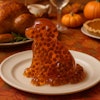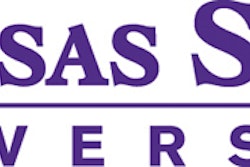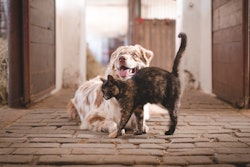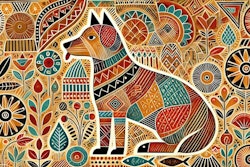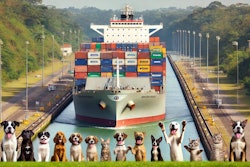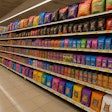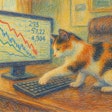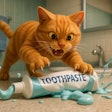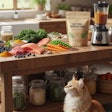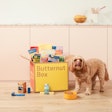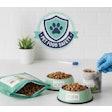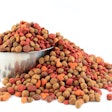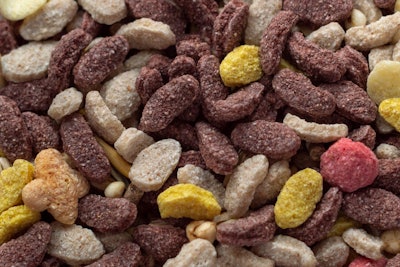
Recent monthly U.S. pet food sales data show unit and volume sales growing slightly yet at greater rates than value (dollar) sales growth, according to Chris Storves, director, North America retail, pet industry, for NielsenIQ (NIQ). The value sales growth rates have also been small for the past six months, likely due to pet food prices falling from their high inflation rates of recent years.
Presenting the data during KibbleCon 2024 at Kansas State University on October 24, Storves showed that year-over-year (YOY) pet food dollar sales growth has steadily fallen throughout 2024 from 5.2% in January to -0.2% in September, with very small growth (0.2% to 0.3%) in July and August. June represented the lowest rate, down 0.9%.
The silver lining may be that while pet food unit and volume growth started out very small or in the negative in January, both metrics are now showing positive, albeit still slight, growth: 0.8% for units in September, down from a high of 1.4% in July, and 0.2% for volume in September, down from high of a high 0.8% in both April and August.
Falling pet food prices but more actual food sold
Storves also shared U.S. Bureau of Labor Statistics (BLS) data showing that YOY pet food inflation fell to -0.4% in July 2024. (A more recent BLS report, from September 2024, indicated a -0.9% YOY inflation change.) With U.S. pet food sales growth over the past two years being mostly attributable to higher prices — inflation — rather than to actual sales of more pet food, in terms of units or volume, the lower monthly inflation leads to lower dollar sales growth.
On the other hand, the positive growth rates for pet food units and volume, while very small, may reflect that pet owners are indeed now starting to buy more pet food.
Storves was careful to caution that with commodity prices for raw materials such as poultry and cattle still being relatively high YOY (7.4% and 8.6%, respectively, as of August 2024), the sales changes don’t necessarily mean the pet food market is out of the woods just yet. After all, he said, chicken and beef are still the most popular flavors or varieties for both dog and cat food.
In addition, sales growth rates for dog food, by far the largest category, are up only slightly YOY for dollars (1.1%), while rates for units and volume are still down (-1.7% and -0.9%, respectively), indicating inflation is still at play to some extent. That’s the case for dog food overall, including the dry and wet subcategories. Only dog treats are up by small amounts, ranging from 1% to 1.9%, in terms of dollars, units and volume.
Though cat food holds a smaller share of the U.S. pet food market, accounting for US$14.7 billion in dollar sales through October 5, 2024, compared to dog food’s US$33.5 billion, the cat food category is showing positive growth across all categories and metrics. For example, the total category increased 6.1% YOY in dollars, 1.9% in units and 3.9% in volume, with both dry and wet cat food registering similar or even higher growth in all three metrics. Cat treats experienced the highest growth: 9.5% YOY in dollars, 4.3% in units and 9.4% in volume.
Newer pet food formats still showing higher growth
As has been the case for several years, so-called alternative pet food formats are showing the greatest growth, though from much smaller bases than traditional formats like kibble and canned. Among dry types of dog and cat food sold in the U.S. pet retail channel, dollar sales of traditional kibble declined by 1.8% through the 52-week-period ending June 29, 2024, according to NIQ data, while “kibble plus” (kibble with freeze-dried or similarly processed pieces added) grew 3.7% and 100% freeze dried grew 7.5%. (Dehydrated dry dog and cat food declined by 2.8%.)
However, traditional kibble still accounted for US$6.7 billion over those 52 weeks, compared to US$739.3 million for kibble plus and US$322.1 million for freeze dried. That’s at least partially due to the average price per pound for each: US$2.52 for kibble, US$4.22 for kibble plus and US$35.23 for freeze dried.
Sales of dry types of dog and cat food sold in all other U.S. retail channels showed similar patterns, with the main exception being a dive in kibble plus sales of -23.8% over the 52-week-period. In addition, the differences in sales totals among the various types are even more stark, with traditional dry accounting for US$10.9 billion, kibble plus for US$1.3 million and freeze dried for US$1.2 million.
Interestingly, with NIQ’s classification of wet types of dog and cat food, refrigerated and frozen products showed faster growth than in pet retail and all other channels — at higher rates than for canned food (what NIQ calls shelf-stable wet food) and for the alternative dry formats. That translates to 12.2% growth for refrigerated and 4.4% growth for frozen in pet retail, compared to only 0.7% growth for shelf-stable wet. In all other channels, refrigerated pet foods increased 28.9% over the 52-week period, while frozen grew 34.9% and shelf-stable, 2%.
As with the dry formats, sales of shelf-stable wet pet food total in the billions (US$2.1 billion to $6.1 billion) compared to sales in the millions for refrigerated and frozen, though the latter totals are higher than for the alternative dry formats. For example, refrigerated wet food sales in all channels reached US$984.8 million, likely due to Freshpet’s continued expansion into grocery and mass outlets.

